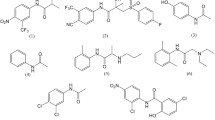Summary
Background. The mechanism whereby methyl-2-oxopropylnitrosamine (MOP) is activated remains unknown. To begin investigating this mechanism, we followed MOP disappearance during its incubation with liver and pancreatic slices and homogenates from Syrian hamsters and rats.
Methods. After the incubations, disappearance of 100 µM MOP and appearance of a metabolite was followed by high-performance liquid chromatography (HPLC) with ultraviolet (UV) detection.
Results. Disappearance rates were 1.2 nmol/mg protein/h for hamster liver slices; zero for hamster pancreatic slices, ducts and acini; zero for rat liver and pancreatic slices; and 11.8, 12.8, 1.3, and 2.3 nmol MOP/mg/h for hamster liver homogenate and cytosol, and hamster pancreas homogenate and microsomes, respectively. The principal MOP metabolite was identified as methyl-2-hydroxypropylnitrosamine (MHP) by its HPLC behavior and its 1H-NMR and mass spectra. MHP yields were generally similar to MOP consumption, but were zero for hamster pancreatic homogenate despite its ability to metabolize MOP.
Conclusion. MOP is a pancreatic carcinogen in hamsters but not in rats. In metabolic studies, hamster liver slices and homogenate (especially the cytosol) produced MHP from MOP. This is probably an inactivation reaction. Hamster pancreas homogenate (especially the microsome fraction), but not rat pancreas homogenate, metabolized MOP without forming MHP, indicating another route of metabolism, perhaps activation to give the proximal carcinogen.
Similar content being viewed by others
References
Lawson T, Nagel D, Rogers D. The activation of B-substituted nitrosamines that are carcinogenic to the pancreas. Int J Pancreatol 1991; 10: 9–21.
Lijinsky W, Reuber MD, Saavedra JE, Singer GM. Carcinogenesis in F344 Rats by N-nitrosomethyl-n-propylamine derivatives. J Natl Cancer Inst 1983; 70: 959–963.
Lijinsky W, Kovatch RM, Knutsen GL. Carcinogenesis by oxygenated nitrosomethylpropylamines in Syrian hamsters. J Cancer Res Clin Oncol 1985; 109: 1–4.
Parsa I, Butt KMH. Transformation of human organ cultures by nitrosamines, in Magee PN, ed. Banbury Report 12: Nitrosamines and Human Cancer, Cold Spring Harbor Laboratory Press, Cold Spring Harbor, NY 1982; pp. 15–24.
Issenberg P, Conrad EE, Nielsen JW, Klein DA, Miller SE. Determination of N- nitrosobis(2-hydroxypropyl)amine in environmental samples. IARC Sci Publ 1984; 57: 43–50.
Tolbert PE. Oils and cancer. Cancer Causes Control 1997; 8: 386–405.
Preussmann R. Stewart BW. N-Nitroso carcinogens, in Searle CE, ed. Chemical Carcinogens. ACS Monograph 182, American Chemical Society, Washington, DC 1984; pp. 643–828.
Mirvish SS. Role of N-nitroso compounds (NOC) in etiology of gastric, esophageal, nasopharyngeal and bladder cancer, and contribution to cancer of known exposures to NOC. Cancer Lett 1995; 93: 17–48.
Lawson TA, Gingell R, Nagel D, Hines LA, Ross A. Methylation of hamster DNA by the carcinogen N-nitroso-bis (2- oxopropyl) amine. Cancer Lett 1981; 11: 251–255.
Leung KH, Archer MC. Studies on the metabolic activation of beta-keto nitrosamines: Mechanisms of DNA methylation by N-(2-oxopropyl)-N-nitrosourea and N-nitroso-N-acetoxymethyl-N-2-oxopropylamine. Chem Biol Interac 1984; 48: 169–179.
Nagel D, Lewis R, Fischer M, Stansbury K, Stepan K, Lawson TA. B-oxidized N-nitrosoalkylcarbamates as models for DNA alkylation by N-nitrosobis(2-oxopropyl)amine in Syrian hamsters. IARC Sci Publ 1987; 84: 71–74.
Lawson T, Kolar C. Mutation of V79 cells by N-dialkyl-nitrosamines after activation by hamster pancreas duct cells. Mutat Res Environ Mutagen Rel Subj 1992; 272: 139–144.
Farrelly JG, Stewart ML, Farnsworth DW, Suavedra JE. Metabolism of the Z and E isomers of N-nitroso-N-methyl-(2-oxopropyl)amine by rat hepatocytes. Cancer Res 1988; 48: 3347–3349.
Chen SC, Wang XJ, Kolar C, Lawson TA, Mirvish, SS. Metabolism of methyl-2-oxopropylnitrosamine by hamster liver and pancreas. Proc Am Assoc Cancer Res 1998; 39: 123 (Abstract).
Nagel D, Kupper R. Synthesis of 14C-labeled N-nitrosobis(2-oxopropyl)amine. J Labelled Comp Radiopharm 1980; 18: 1081–1085.
Lowry OH, Rosehrough NJ, Farr L, Randall RJ. Protein measurement with the Folin phenol reagent. J Biol Chem 1951; 193: 265–275.
Githens S, Whelan JF. Isolation and culture of hamster pancreatic ducts. J Tissue Culture Methods 1998; 8: 97–102.
Lawson T, Nagel D. The production and repair of DNA damage by N-nitrosobis(2-oxopropyl)amine and azaserine in hamster and rat pancreas acinar and duct cells. Carcinogenesis 1988; 9: 1007–1010.
Pei GK, Farnsworth DW, Saavedra JE. One-pot oxidation and nitrosation of beta- alkanolamines with KMNO4-NaNO2. A convenient preparation of beta-ketonitrosamines. Syn Commun 1989; 19: 207–213.
Singer GM, Lijinsky W, Buettner L, McClusky GA. Relationship of rat urinary metabolites of N-nitrosomethyl-N- alkylamine to bladder carcino genesis. Cancer Res 1981; 41: 4942–4946.
Lawson TA, Helgeson AS, Grandjean CJ, Wallcave L, Nagel D. The formation of N-nitrosomethyl(2-oxopropyl)amine from N-nitrosobis(2-oxopropyl)amine in vivo. Carcinogenesis 1981; 2: 845–849.
Kokkinakis DM, Scarpelli DG, Rao MS, Hollenberg PF. Metabolism of pancreatic carcinogens N-nitroso-2, 6-dimethylmorpholine and N-nitrosobis(2-oxopropyl) amine by microsomes and cytosol of hamster pancreas and liver. Cancer Res 1983; 43: 5761–5767.
Farrelly J, Saavedra J, Kupper R, Stewart ML. The metabolism of N-nitrosobis(2-oxypropyl) amine by microsomes and hepatocytes from Fischer 344 rats. Carcinogenesis 1987; 8: 1095–1099.
Pour P, Salmasi S, Runge R, Gingell R, Wallcave L, Nagel D. Carcinogenicity of N-nitrosobis(2-hydroxypropyl) amine and N-nitrosobis(2-oxopropyl)amaine in MRC rats. J Nat Cancer Inst 1999; 63: 181–190.
Lijinsky W, Reuber MD, Saavedra JE, Singer GM. Carcinogenesis in F244 rats by N-nitrosomethyl-n-propylamine derivatives. J Natl Cancer Inst 1983; 70
Author information
Authors and Affiliations
Corresponding author
Rights and permissions
About this article
Cite this article
Chen, S.C., Wang, X., Zhou, L. et al. Metabolism of the hamster pancreatic carcinogen methyl-2-oxopropylnitrosamine by hamster liver and pancreas. International Journal of Pancreatology 27, 105–112 (2000). https://doi.org/10.1385/IJGC:27:2:105
Received:
Revised:
Accepted:
Issue Date:
DOI: https://doi.org/10.1385/IJGC:27:2:105




